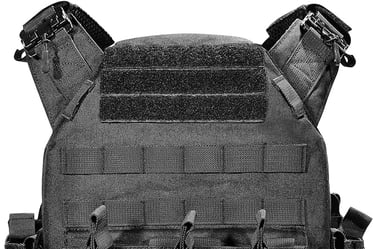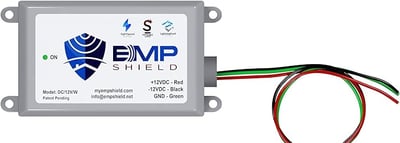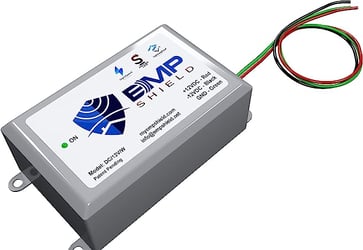Guide to Tactical Assault Panels
SURVIVALEMP
2/29/20247 min read
What are Tactical Assault Panels
The Tactical Assault Panel (TAP) is not merely an item of tactical gear but a sophisticated system designed to enhance the operational capabilities of military and law enforcement personnel. Its design philosophy centers around modularity, flexibility, and rapid accessibility to essential gear and ammunition. Constructed from high-durability materials such as nylon and reinforced polymer, TAPs are engineered to withstand harsh environments and rigorous use. This resilience is critical, as the panel must maintain integrity in diverse operational scenarios, from urban engagements to remote field operations. The focus on modular design allows for the attachment of various pouches and accessories, enabling users to customize their loadout based on mission requirements and personal preferences.
The adaptability of the Tactical Assault Panel extends beyond its physical configuration. Its ergonomic design ensures that weight distribution is balanced, reducing fatigue and enhancing mobility for the wearer. This aspect is crucial, considering the extended periods personnel may be required to carry their gear. The integration capability of TAPs with standard-issue military vests and plate carriers underscores their utility, making them a versatile component of the soldier's load-carrying system. By facilitating quick access to ammunition and equipment, TAPs significantly contribute to the operational efficiency and responsiveness of military units in the field.
TAPs Setup Walkthrough
The integration of Tactical Assault Panels (TAPs) with existing military and tactical gear systems is a critical process that ensures the effectiveness and efficiency of soldiers and tactical operators in the field. This seamless integration is essential for maintaining operational readiness and adaptability in various mission scenarios. The following points provide a step-by-step guide to integrating TAPs with other gear, emphasizing precision and adherence to best practices.
Compatibility Check: Ensure the TAP is compatible with your existing vest or carrier system. This involves verifying attachment points and modular capabilities to accommodate additional pouches and accessories.
Attachment Process: Begin by aligning the TAP's attachment straps or clips with the corresponding points on your vest or carrier. Securely fasten each point to ensure a snug fit that prevents shifting or noise during movement.
Load Distribution: Strategically place essential items and ammunition within the TAP's pouches, considering balance and accessibility. Even distribution of weight is crucial to maintain mobility and reduce fatigue.
Modular Additions: Utilize the modular capabilities of the TAP to attach additional pouches or gear specific to the mission's requirements. This customization enhances operational efficiency and preparedness.
Adjustment for Fit: Adjust the TAP straps to fit the wearer's body snugly. Proper adjustment ensures comfort and reduces the risk of the panel catching on environmental obstacles.
Field Testing: Conduct a field test of the integrated system under conditions similar to those expected during actual operations. This step identifies any issues with fit, accessibility, or mobility that can be addressed before deployment.
Maintenance and Inspection: Regularly inspect and maintain the TAP and its attachments. Check for wear and tear, secure all fastenings, and replace any damaged components to ensure the system's reliability and longevity.
Tactical Assault Panel Straps
The Tactical Assault Panel Straps are pivotal in ensuring the system's modularity and adaptability. These straps, typically made from the same high-strength materials as the panel itself, are designed for easy adjustment and secure attachment. Their adjustability is paramount, allowing for a custom fit that accommodates various body sizes and shapes, as well as the ability to adapt to different loadouts. This flexibility ensures that the panel remains snug and secure, minimizing movement and noise that could compromise the wearer's effectiveness or safety. Moreover, the durability of the straps is essential for maintaining the functionality of the TAP under continuous use, further emphasizing the system's design focus on reliability and user-centricity. Through these straps, the Tactical Assault Panel system achieves a balance of comfort, adaptability, and resilience, underscoring its role as a critical tool for tactical operations.
Customization and Operational Efficiency
Customizing the Tactical Assault Panel to meet specific operational needs is not just about adding or removing pouches; it's about optimizing the gear for maximum efficiency and effectiveness. The following bullet points highlight key considerations and best practices in the customization process.
Mission-Specific Configuration: Tailor the TAP's loadout to the specific requirements of each mission. This may involve configuring the panel for quick access to ammunition, medical supplies, or communication devices, depending on the operational priorities.
Ergonomic Consideration: Customize the placement of pouches and accessories to align with the wearer's natural movements. This ensures that essential items can be accessed quickly and without hindrance, enhancing operational response times.
Weight Management: Keep the overall weight of the TAP in mind during customization. Distribute weight evenly and avoid overloading, as excessive weight can impair mobility and increase fatigue during extended operations.
In light of these discussions, it becomes evident that the strategic deployment of TAPs can lead to significant efficiency improvements and operational readiness. The recommendation for military and law enforcement units is clear: investing in and leveraging the advanced capabilities of Tactical Assault Panels will not only enhance individual operator agility and effectiveness but also contribute to the collective operational success of the unit. As we look towards future advancements in tactical gear, the continued refinement and adaptation of TAPs will undoubtedly play a pivotal role in meeting the ever-evolving challenges of tactical and combat environments. Ultimately, the effective utilization of Tactical Assault Panels is a testament to the ingenuity and adaptability of modern tactical forces, reinforcing their readiness to face the challenges of tomorrow.
Operational Utility of the Tactical Assault Panel
The operational utility of the Tactical Assault Panel (TAP) hinges on its ability to be configured and reconfigured according to the dynamic requirements of the battlefield. The process of setting up a TAP involves more than simply attaching it to a soldier's vest; it requires a thoughtful consideration of the gear's placement, accessibility, and impact on the wearer's mobility. Precision in configuring the TAP ensures that soldiers can access their equipment swiftly and efficiently, a critical factor in high-stress environments. This meticulous setup is complemented by the TAP's modular design, which allows for the addition or removal of pouches and accessories based on the mission's needs, further emphasizing the system's adaptability and functionality.
Moreover, the effectiveness of a TAP in enhancing a soldier's operational capacity is significantly influenced by its integration with other gear. Ensuring seamless compatibility with communication devices, hydration systems, and ballistic protection is paramount. This integration not only enhances the soldier's operational efficiency but also ensures that the load carried is balanced and does not impede movement. The ability to quickly adapt the TAP's configuration in response to changing tactical situations underscores its value in maintaining operational readiness and flexibility, making it an indispensable tool in the tactical operator's arsenal.
"Save a car by just hooking up EMP Shield"
Advancements and Future Directions
Future advancements are likely to focus on incorporating new materials for enhanced durability, lightweight designs for improved mobility, and integrated technology for better situational awareness. This evaluation framework not only aids in selecting the most effective TAP for current operations but also anticipates the evolution of tactical gear to meet the demands of future combat scenarios, ensuring that soldiers and tactical operators are always equipped with the most advanced and functional gear available.
Selecting the Ideal Tactical Assault Panel: Factors and Considerations
The Choosing the right Tactical Assault Panel (TAP) is a critical decision that can significantly impact the operational effectiveness and comfort of military and law enforcement personnel. The selection process should begin with a clear assessment of the specific requirements and scenarios in which the panel will be used. Factors such as the type of missions, the environment in which they operate, and the essential gear that must be carried should guide the choice. For instance, panels designed for urban operations may prioritize quick access to ammunition and breaching tools, while those intended for long-duration patrols might focus on hydration and communication equipment compatibility. Additionally, the compatibility of the TAP with existing personal protective equipment and load-carrying systems cannot be overlooked, as seamless integration enhances operational efficiency and reduces the likelihood of gear interference.
Another critical aspect of selecting the right TAP involves evaluating the modularity, durability, and adaptability of the panel. A high-quality TAP should offer a balance between robust construction capable of withstanding harsh conditions and the flexibility to adapt to various mission needs through customizable pouches and attachments. The materials used in the panel's construction play a significant role in its durability and weight, affecting the wearer's agility and endurance. Ergonomics and comfort are also paramount, as a well-designed TAP reduces fatigue and allows for prolonged use without compromising mobility. Ultimately, the right TAP is one that meets the operational demands of its users, offering a tailored fit that accommodates a wide range of body types and mission-specific load-outs, ensuring that personnel remain agile, prepared, and effective in the field.
Maximizing Operational Efficiency with Tactical Assault Panels
Throughout this exploration of Tactical Assault Panels (TAPs), we've delved into their design philosophy, modular capabilities, and the critical role they play in enhancing the operational efficiency of military and law enforcement personnel. The integration of TAPs with existing gear systems, coupled with their customization potential, underscores their value in adapting to the multifaceted demands of tactical operations. By prioritizing modularity, durability, and ergonomic design, TAPs ensure that operators can carry essential equipment in an organized, accessible manner, thereby improving response times and operational effectiveness. The insights provided on system integration, customization, and future advancements highlight the TAP's significance not only as a piece of tactical gear but as a cornerstone in the evolution of modern combat and tactical operations.
We recommend the GFIRE for Training
"Auto Solar Flare Protection, Lightning, EMP Surge Protection."
As an Amazon Associate items and images linked can earn us commission.
This Guide Covers
Understanding Tactical Assault Panels
The concept and design philosophy behind TAPs.
Materials and durability aspects.
Comprehensive overview of Tactical Assault Panel Straps
Detailed analysis of strap design, adjustability, and material.
Importance of straps in customization and load distribution.
System Integration and Modular Attachments
How TAPs integrate with existing military and tactical gear.
The role of modular attachments in enhancing versatility.
onewordsurvive.com
Contact | Questions | Ideas
survive@onewordsurvive.com
Cookie Notice: Our website uses cookies to enhance your browsing experience. By continuing to use our site, you agree to our use of cookies. If you wish to manage your cookie preferences, you may do so in your browser settings.
As an Amazon Affiliate, our team may earn money from qualifying purchases. This page may contain affiliate links, which means if you click through and make a purchase, we may receive a commission at no additional cost to you. This helps support our research and editorial team, and please know we only recommend high-quality products.












